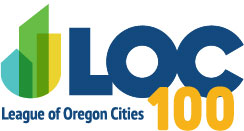LOC News
Revenue Forecast Kicks Off State Budgeting Process
This week, the Legislative Revenue Committee heard the state’s March revenue forecast, the starting point for the Legislature’s proposed state budget. The state Office of Economic Analysis will provide another revenue forecast in May that will be used to determine the final budget.
Currently, the state is projected to have $38.2 billion to spend for the next two years. Gov. Tina Kotek has proposed a $39.3 billion budget. While the revenue forecast is slightly down, the Oregon economy seems stable.
Key highlights of the March forecast include:
- Labor market is strong. The labor market is expected to remain at or near full employment. The unemployment rate will remain in the low 4% range, while the share of working-age Oregonians with a job will be at or near an all-time high.
- Projected kickers grow. The personal kicker is expected to total $1.72 billion, which will be returned to taxpayers as a credit on their 2025 tax return. The corporate kicker now stands at an expected $993.1 million and will be retained in the General Fund and spent on education in 2027-2029.
- Lottery revenues down. The March lottery forecast has been revised downward from the December outlook, reflecting a reduction in overall resources. For the current 2023-25 biennium, total resources are lowered by $20 million, with future biennia seeing a more significant decrease of $65-75 million lottery revenues are key sources of funding for the Legislature to fund infrastructure projects.
- Marijuana forecast trending slightly down. The March marijuana forecast is mostly unchanged from the December outlook, with only slight downward adjustments. In the current 2023-25 biennium, resources are lowered by $1.7 million (-0.6%), while the 2025-27 forecast is reduced by $0.3 million (-0.1%).
- Federal policies may impact Oregon economy. Oregon economic activity will be highly vulnerable to national policies relating to tariffs. Exports and manufacturing play outsized roles in the state, so tariff measures (and counter-measures) will be extremely consequential to key industrial pillars of the Oregon economy, such as agriculture, semiconductors and apparel. It is still too early for the state economist to determine the full extent rumored policies at the federal level will impact Oregon.
It is still too early for State Economist Carl Riccadonna to determine the full extent rumored policies at the federal level will impact Oregon.
Contact: Jenna Jones, Lobbyist – jjones@orcities.org
Last Updated 2/28/25

